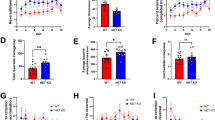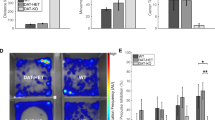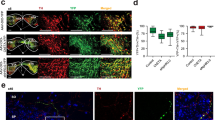Abstract
Dopamine-mediated neurotransmission has been implicated in the modulation of synaptic plasticity and in the mechanisms underlying learning and memory. In the present study, we tested different forms of activity-dependent neuronal and behavioral plasticity in knockout mice for the dopamine transporter (DAT-KO), which constitute a unique genetic model of constitutive hyperdopaminergia. We report that DAT-KO mice exhibit slightly increased long-term potentiation and severely decreased long-term depression at hippocampal CA3–CA1 excitatory synapses. Mutant mice also show impaired adaptation to environmental changes in the Morris watermaze. Both the electrophysiological and behavioral phenotypes are reversed by the dopamine antagonist haloperidol, suggesting that hyperdopaminergia is involved in these deficits. These findings support the modulation by dopamine of synaptic plasticity and cognitive flexibility. The behavioral deficits seen in DAT-KO mice are reminiscent of the deficits in executive functions observed in dopamine-related neuropsychiatric disorders, suggesting that the study of DAT-KO mice can contribute to the understanding of the molecular basis of these disorders.
Similar content being viewed by others
Log in or create a free account to read this content
Gain free access to this article, as well as selected content from this journal and more on nature.com
or
References
Arbuthnott GW, Ingham CA, Wickens JR (2000). Dopamine and synaptic plasticity in the neostriatum. J Anat 196 (Part 4): 587–596.
Arnsten AFT (1998). Catecholamine modulation of prefrontal cortical cognitive function. Trends Cogn Scie 2: 436–446.
Arvanov VL, Liang X, Schwartz J, Grossman S, Wang RY (1997). Clozapine and haloperidol modulate N-methyl-D-aspartate- and non-N-methyl-D-aspartate receptor-mediated neurotransmission in rat prefrontal cortical neurons in vitro. J Pharmacol Exp Ther 283: 226–234.
Barkley RA (1997). Behavioral inhibition, sustained attention, and executive functions: constructing a unifying theory of ADHD. Psychol Bull 121: 65–94.
Berke JD, Hyman SE (2000). Addiction, dopamine, and the molecular mechanisms of memory. Neuron 25: 515–532.
Calabresi P, Maj R, Pisani A, Mercuri NB, Bernardi G (1992). Long-term synaptic depression in the striatum: physiological and pharmacological characterization. J Neurosci 12: 4224–4233.
Carboni E, Spielewoy C, Vacca C, Nosten-Bertrand M, Giros B, Di Chiara G (2001). Cocaine and amphetamine increase extracellular dopamine in the nucleus accumbens of mice lacking the dopamine transporter gene. J Neurosci 21: 141–144.
Carboni E, Tanda GL, Frau R, Di Chiara G (1990). Blockade of the noradrenaline carrier increases extracellular dopamine concentrations in the prefrontal cortex: evidence that dopamine is taken up in vivo by noradrenergic terminals. J Neurochem 55: 1067–1070.
Cass WA, Gerhardt GA (1995). In vivo assessment of dopamine uptake in rat medial prefrontal cortex: comparison with dorsal striatum and nucleus accumbens. J Neurochem 65: 201–207.
Cools R (2006). Dopaminergic modulation of cognitive function-implications for L-DOPA treatment in Parkinson's disease. Neurosci Biobehav Rev 30: 1–23.
Gainetdinov RR, Caron MG (2003). Monoamine transporters: from genes to behavior. Annu Rev Pharmacol Toxicol 43: 261–284. E-pub 2002 Sep 2017.
Gainetdinov RR, Wetsel WC, Jones SR, Levin ED, Jaber M, Caron MG (1999). Role of serotonin in the paradoxical calming effect of psychostimulants on hyperactivity. Science 283: 397–401.
Gemperle AY, Enz A, Pozza MF, Luthi A, Olpe HR (2003). Effects of clozapine, haloperidol and iloperidone on neurotransmission and synaptic plasticity in prefrontal cortex and their accumulation in brain tissue: an in vitro study. Neuroscience 117: 681–695.
Giros B, Jaber M, Jones SR, Wightman RM, Caron MG (1996). Hyperlocomotion and indifference to cocaine and amphetamine in mice lacking the dopamine transporter. Nature 379: 606–612.
Gurden H, Tassin JP, Jay TM (1999). Integrity of the mesocortical dopaminergic system is necessary for complete expression of in vivo hippocampal-prefrontal cortex long–term potentiation. Neuroscience 94: 1019–1027.
Hyman SE, Malenka RC (2001). Addiction and the brain: the neurobiology of compulsion and its persistence. Nat Rev Neurosci 2: 695–703.
Jay TM (2003). Dopamine: a potential substrate for synaptic plasticity and memory mechanisms. Prog Neurobiol 69: 375–390.
Jones SR, Gainetdinov RR, Hu XT, Cooper DC, Wightman RM, White FJ et al (1999). Loss of autoreceptor functions in mice lacking the dopamine transporter. Nat Neurosci 2: 649–655.
Jones SR, Gainetdinov RR, Jaber M, Giros B, Wightman RM, Caron MG (1998). Profound neuronal plasticity in response to inactivation of the dopamine transporter. Proc Natl Acad Sci USA 95: 4029–4034.
Lisman JE, Grace AA (2005). The hippocampal-VTA loop: controlling the entry of information into long-term memory. Neuron 46: 703–713.
Lisman JE, Otmakhova NA (2001). Storage, recall, and novelty detection of sequences by the hippocampus: elaborating on the SOCRATIC model to account for normal and aberrant effects of dopamine. Hippocampus 11: 551–568.
Liu QS, Pu L, Poo MM (2005). Repeated cocaine exposure in vivo facilitates LTP induction in midbrain dopamine neurons. Nature 437: 1027–1031.
Malenka RC, Bear MF (2004). LTP and LTD: an embarrassment of riches. Neuron 44: 5–21.
Morice E, Denis C, Giros B, Nosten-Bertrand M (2004). Phenotypic expression of the targeted null-mutation in the dopamine transporter gene varies as a function of the genetic background. Eur J Neurosci 20: 120–126.
Mundorf ML, Joseph JD, Austin CM, Caron MG, Wightman RM (2001). Catecholamine release and uptake in the mouse prefrontal cortex. J Neurochem 79: 130–142.
Nestler EJ, Hope BT, Widnell KL (1993). Drug addiction: a model for the molecular basis of neural plasticity. Neuron 11: 995–1006.
Nieoullon A (2002). Dopamine and the regulation of cognition and attention. Prog Neurobiol 67: 53–83.
Nishioku T, Shimazoe T, Yamamoto Y, Nakanishi H, Watanabe S (1999). Expression of long-term potentiation of the striatum in methamphetamine-sensitized rats. Neurosci Lett 268: 81–84.
Poldrack RA, Packard MG (2003). Competition among multiple memory systems: converging evidence from animal and human brain studies. Neuropsychologia 41: 245–251.
Ralph RJ, Paulus MP, Fumagalli F, Caron MG, Geyer MA (2001). Prepulse inhibition deficits and perseverative motor patterns in dopamine transporter knock-out mice: differential effects of D1 and D2 receptor antagonists. J Neurosci 21: 305–313.
Rocha BA, Fumagalli F, Gainetdinov RR, Jones SR, Ator R, Giros B et al (1998). Cocaine self-administration in dopamine-transporter knockout mice. Nat Neurosci 1: 132–137 [see comments] [published erratum appears in Nat Neurosci 1998;1(4): 330].
Rodriguiz RM, Chu R, Caron MG, Wetsel WC (2004). Aberrant responses in social interaction of dopamine transporter knockout mice. Behav Brain Res 148: 185–198.
Sesack SR, Hawrylak VA, Matus C, Guido MA, Levey AI (1998). Dopamine axon varicosities in the prelimbic division of the rat prefrontal cortex exhibit sparse immunoreactivity for the dopamine transporter. J Neurosci 18: 2697–2708.
Shen HW, Hagino Y, Kobayashi H, Shinohara-Tanaka K, Ikeda K, Yamamoto H et al (2004). Regional differences in extracellular dopamine and serotonin assessed by in vivo microdialysis in mice lacking dopamine and/or serotonin transporters. Neuropsychopharmacology 29: 1790–1799.
Sora I, Wichems C, Takahashi N, Li XF, Zeng Z, Revay R et al (1998). Cocaine reward models: conditioned place preference can be established in dopamine- and in serotonin-transporter knockout mice. Proc Natl Acad Sci USA 95: 7699–7704.
Spielewoy C, Gonon F, Roubert C, Fauchey V, Jaber M, Caron MG et al (2000a). Increased rewarding properties of morphine in dopamine-transporter knockout mice. Eur J Neurosci 12: 1827–1837.
Spielewoy C, Roubert C, Hamon M, Nosten-Bertrand M, Betancur C, Giros B (2000b). Behavioural disturbances associated with hyperdopaminergia in dopamine-transporter knockout mice. Behav Pharmacol 11: 279–290.
Tanda G, Pontieri FE, Frau R, Di Chiara G (1997). Contribution of blockade of the noradrenaline carrier to the increase of extracellular dopamine in the rat prefrontal cortex by amphetamine and cocaine. Eur J Neurosci 9: 2077–2085.
Thomas MJ, Beurrier C, Bonci A, Malenka RC (2001). Long-term depression in the nucleus accumbens: a neural correlate of behavioral sensitization to cocaine. Nat Neurosci 4: 1217–1223.
Voermans NC, Petersson KM, Daudey L, Weber B, Van Spaendonck KP, Kremer HP et al (2004). Interaction between the human hippocampus and the caudate nucleus during route recognition. Neuron 43: 427–435.
Whishaw IQ, Dunnett SB (1985). Dopamine depletion, stimulation or blockade in the rat disrupts spatial navigation and locomotion dependent upon beacon or distal cues. Behav Brain Res 18: 11–29.
Yao WD, Gainetdinov RR, Arbuckle MI, Sotnikova TD, Cyr M, Beaulieu JM et al (2004). Identification of PSD-95 as a regulator of dopamine-mediated synaptic and behavioral plasticity. Neuron 41: 625–638.
Acknowledgements
We thank S Davis and S Cooke for helpful comments on the manuscript. We also thank L Hillard for animal care. This work was supported by INSERM and Fondation pour la Recherche Médicale. EM was supported by a fellowship from the Ministère de l'Education Nationale, de la Recherche et de la Technologie.
Author information
Authors and Affiliations
Corresponding author
Additional information
Competing interests statement
The authors declare that they have no competing financial interests.
Rights and permissions
About this article
Cite this article
Morice, E., Billard, JM., Denis, C. et al. Parallel Loss of Hippocampal LTD and Cognitive Flexibility in a Genetic Model of Hyperdopaminergia. Neuropsychopharmacol 32, 2108–2116 (2007). https://doi.org/10.1038/sj.npp.1301354
Received:
Revised:
Accepted:
Published:
Issue date:
DOI: https://doi.org/10.1038/sj.npp.1301354
Keywords
This article is cited by
-
Per2 Expression Regulates the Spatial Working Memory of Mice through DRD1-PKA-CREB Signaling
Molecular Neurobiology (2022)
-
Forebrain-specific, conditional silencing of Staufen2 alters synaptic plasticity, learning, and memory in rats
Genome Biology (2017)
-
DADS Analogues Ameliorated the Cognitive Impairments of Alzheimer-Like Rat Model Induced by Scopolamine
Neurotoxicity Research (2016)
-
Cognition Enhancing and Neuromodulatory Propensity of Bacopa monniera Extract Against Scopolamine Induced Cognitive Impairments in Rat Hippocampus
Neurochemical Research (2016)
-
A behavioral defect of temporal association memory in mice that partly lack dopamine reuptake transporter
Scientific Reports (2015)



